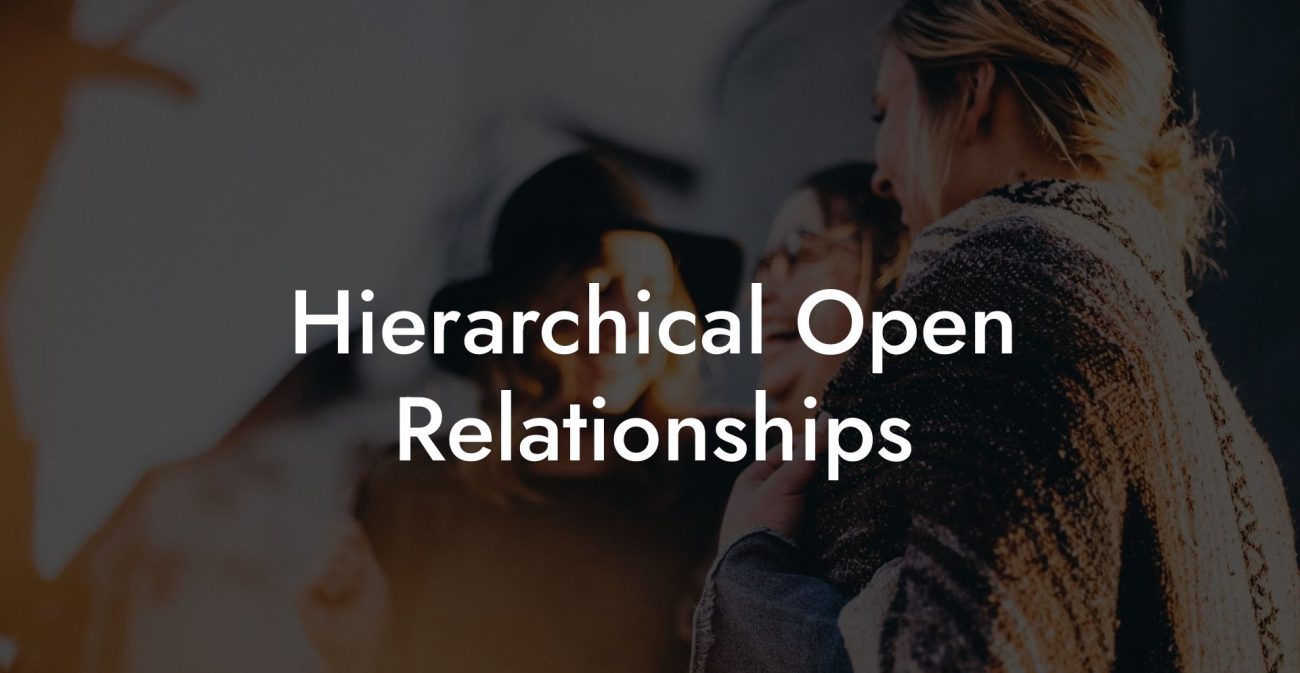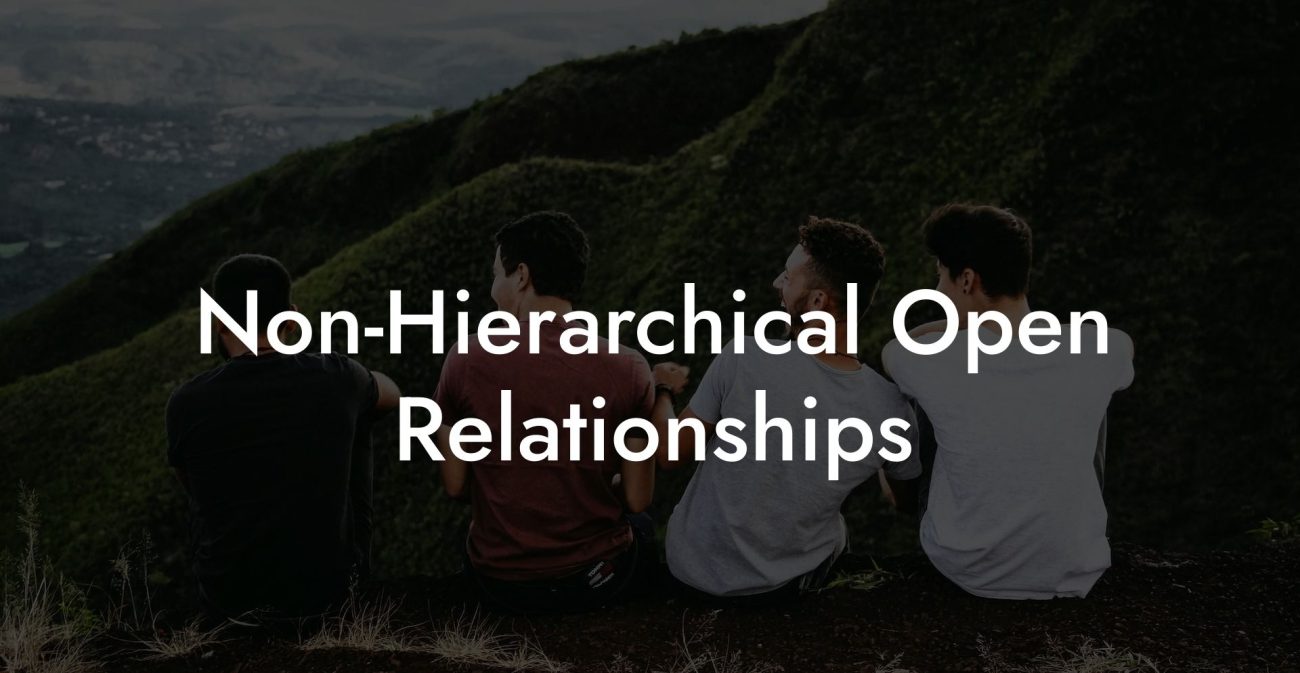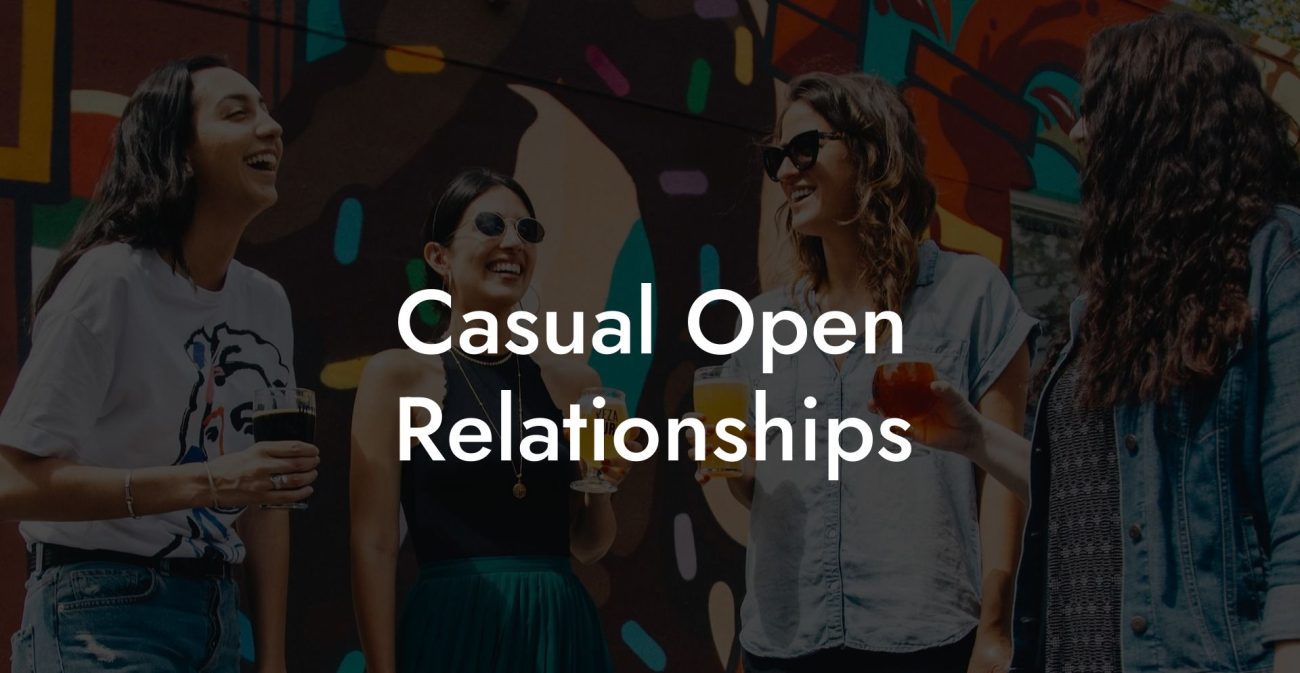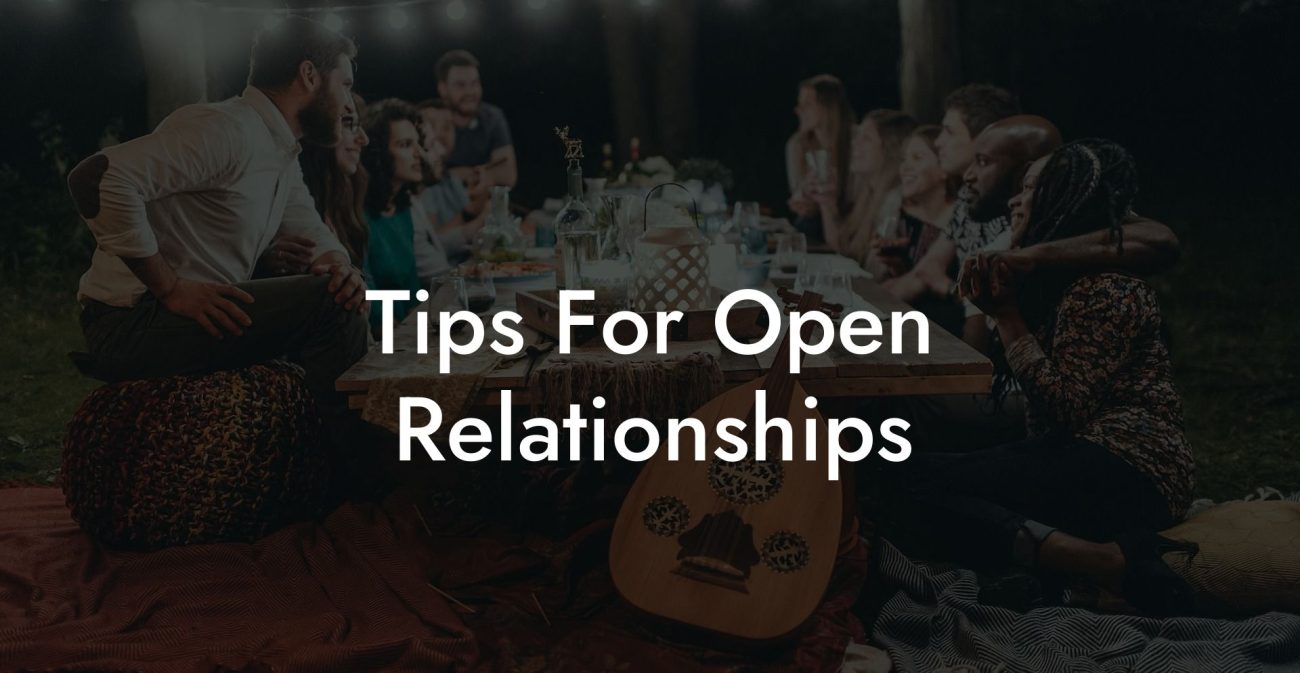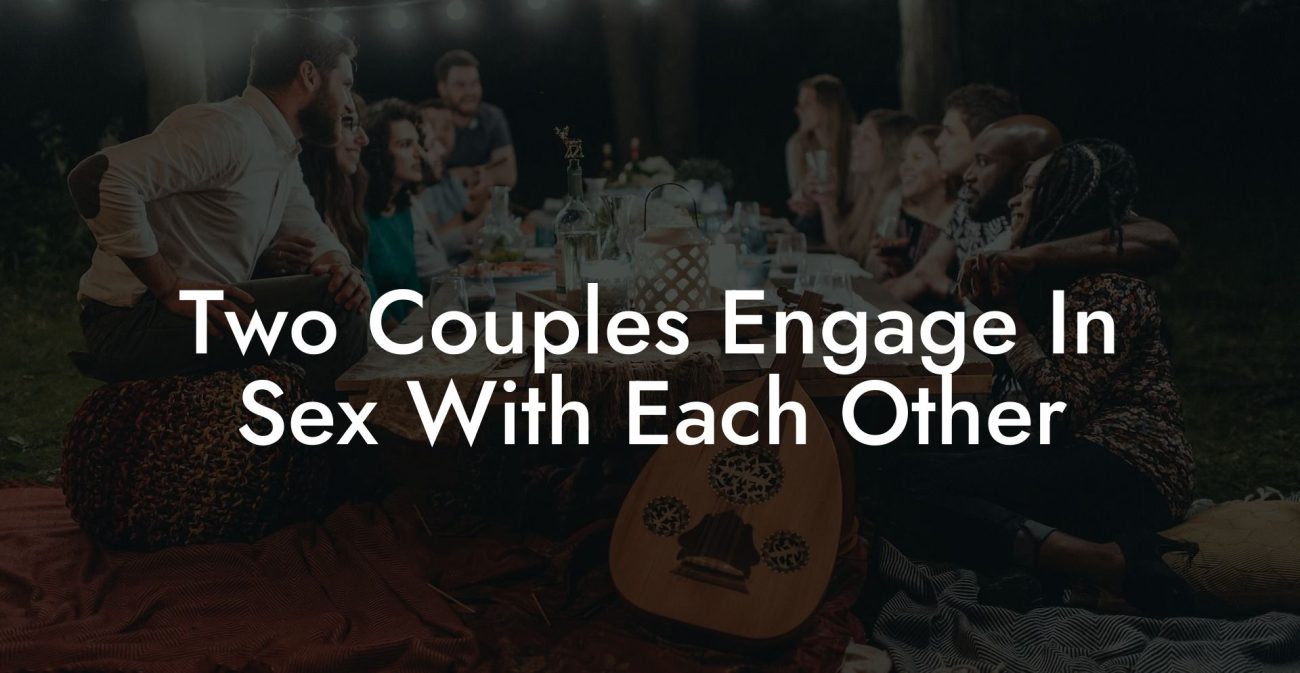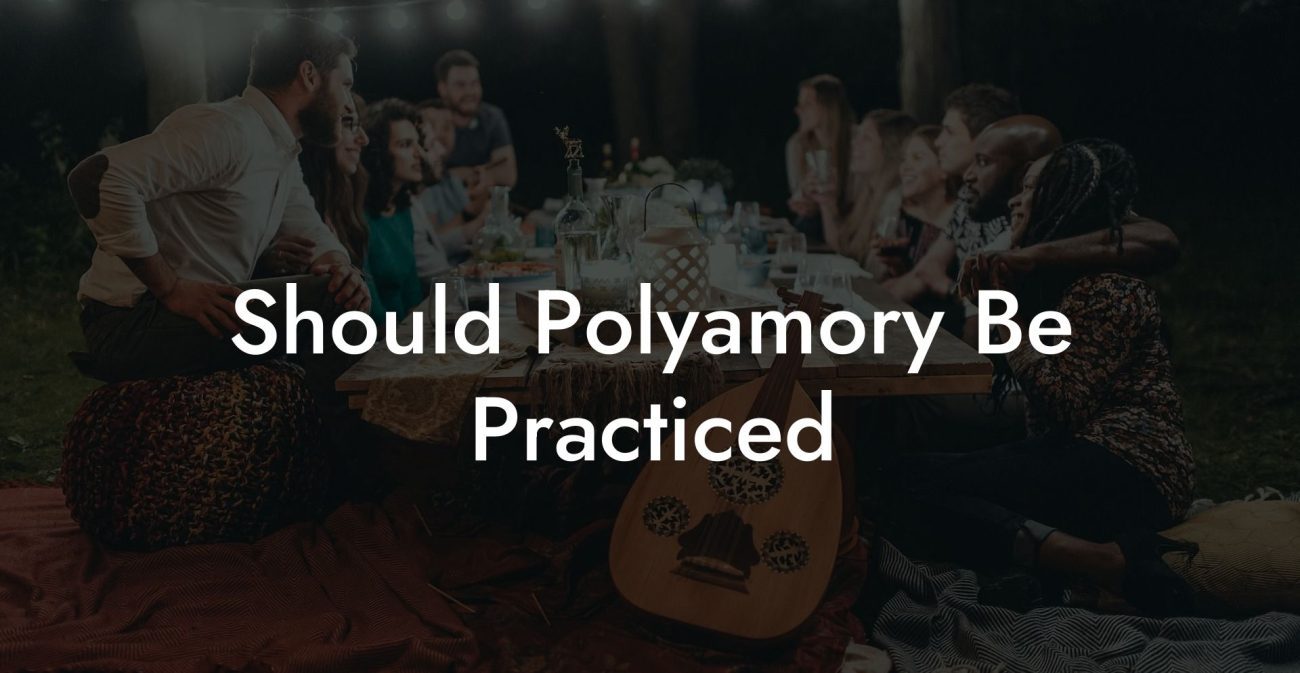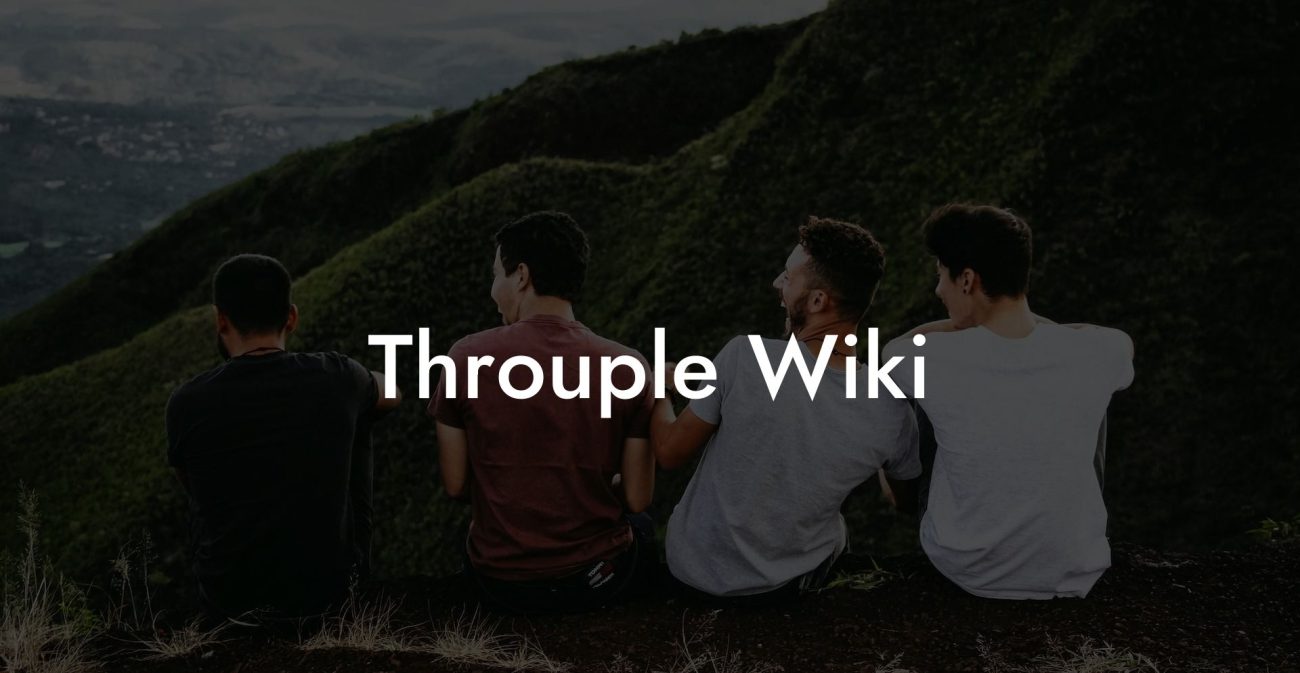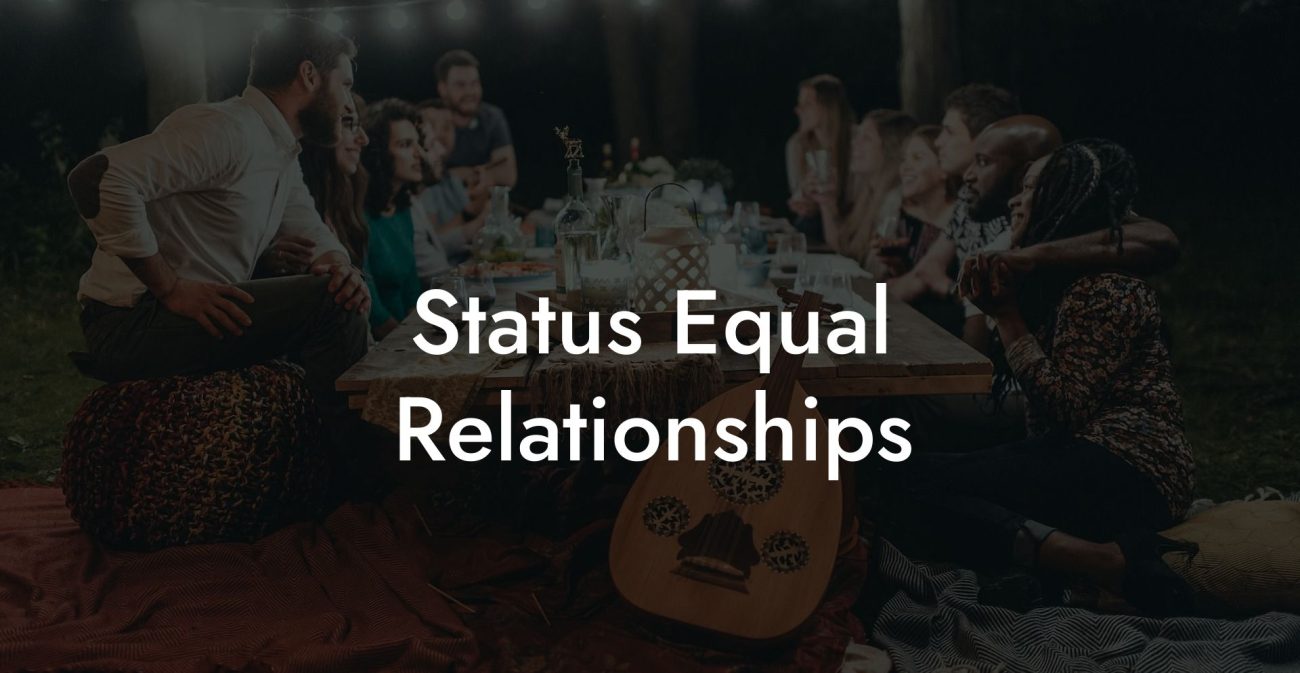Types Of Open Relationships
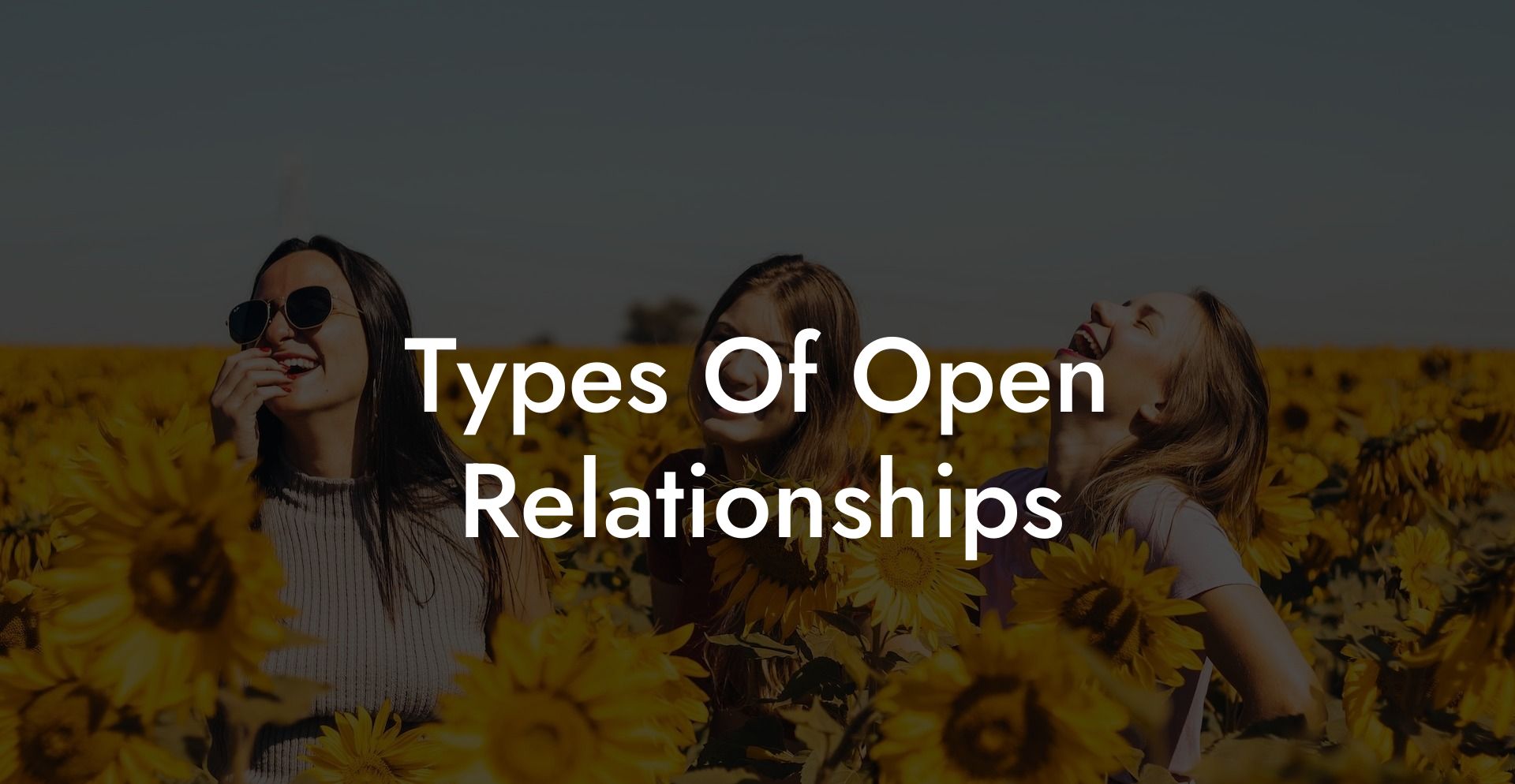
In today's diverse relationship landscape, many couples and individuals are exploring non-traditional models of intimacy that move beyond conventional monogamy. Open relationships provide the freedom to experience multiple connections while maintaining a central, committed bond. This guide will walk you through the various types of open relationships, explain their core principles, and offer practical tips for navigating the unique challenges and rewards of each model. Whether you’re new to open relationships or have been practicing them for years, this resource will help you understand the spectrum of possibilities and decide which type aligns best with your values and lifestyle.
Quick Links to Useful Sections
- Redefining Intimacy in a Modern World
- Understanding Open Relationships: Key Concepts and Principles
- Definition of an Open Relationship
- Types Of Open Relationships
- 1. Traditional Open Relationship
- 2. Open Relationship with Emotional Exclusivity
- 3. Swinging
- 4. Open Relationship with Casual Dating
- 5. Hybrid Models (Polyamory and Open Relationships)
- 6. Relationship Anarchy as an Open Model
- Comparing Different Types of Open Relationships
- Emotional Exclusivity vs. Sexual Openness
- Structured vs. Fluid Models
- Benefits and Challenges of Open Relationships
- Benefits
- Challenges
- Practical Strategies for Navigating Open Relationships
- Enhance Communication
- Set Clear Boundaries
- Prioritize Self-Care
- Build a Support Network
- Frequently Asked Questions (FAQ)
Redefining Intimacy in a Modern World
The concept of open relationships challenges the traditional notion that intimacy must be exclusive. For many, an open relationship is not about the lack of commitment but about expanding the ways in which love, support, and connection can be experienced. With the rise of digital communication, global connectivity, and evolving social norms, people are increasingly finding that non-monogamous arrangements can offer deep emotional fulfillment, personal growth, and a broader network of support.
In this guide, we will explore the different types of open relationships, from classic open relationships that allow sexual exploration outside the primary bond, to swinging, and even models that intersect with polyamory and relationship anarchy. By understanding the unique characteristics of each type, you can better navigate your own relationship dynamics and make informed decisions that honor your needs and the needs of your partners.
Understanding Open Relationships: Key Concepts and Principles
Definition of an Open Relationship
An open relationship is a consensual arrangement in which a couple agrees that one or both partners can engage in sexual or romantic interactions with other people. The foundation of any open relationship is mutual consent, transparency, and clear communication. Unlike infidelity or secrecy, open relationships are structured around the idea that all partners are aware of and agree to the arrangement.
The core principles of open relationships include:
- Mutual Consent: Every participant agrees to the arrangement with full awareness.
- Transparency: Open communication about external interactions and feelings is essential.
- Respect for boundaries: Clearly defined rules help maintain emotional security and prevent misunderstandings.
- Autonomy and Freedom: Individuals retain their personal freedom to explore while nurturing the core bond.
- Adaptability: Open relationships often evolve over time, and flexibility is key to managing changes in needs and desires.
Types Of Open Relationships
1. Traditional Open Relationship
In a traditional open relationship, a couple maintains a primary bond while allowing one or both partners to engage in sexual or romantic encounters with others. The focus is on preserving the central relationship as the anchor, while external interactions are usually agreed upon and governed by established boundaries.
- Characteristics: Clear boundaries, mutual consent, and defined guidelines for external encounters.
- Benefits: Maintains the primary bond while allowing for sexual exploration and variety.
- Challenges: Managing jealousy and ensuring that external experiences do not undermine the primary relationship.
2. Open Relationship with Emotional Exclusivity
Some couples choose an open relationship model where they allow external sexual encounters while maintaining emotional exclusivity with each other. In this arrangement, the primary couple remains the only source of deep emotional connection, even though they may explore sexual experiences with others.
- Characteristics: Emotional exclusivity paired with sexual openness.
- Benefits: Provides security and intimacy within the primary bond while offering opportunities for sexual experimentation.
- Challenges: Balancing the need for emotional intimacy with the desire for sexual variety.
3. Swinging
Swinging is a type of open relationship in which couples engage in sexual activities with others, often in group settings or at organized events. Swingers typically maintain a strong primary relationship but view external encounters as a form of recreational or social activity rather than as opportunities for deep emotional connection.
- Characteristics: Focus on sexual variety and group activities, with clear rules to protect the primary relationship.
- Benefits: Offers a fun, social environment for sexual exploration and can rejuvenate a couple’s intimacy.
- Challenges: May not provide the emotional depth that some individuals seek; managing boundaries is critical.
4. Open Relationship with Casual Dating
In this model, the primary couple agrees to maintain a core emotional bond while one or both partners pursue casual dating outside the relationship. These interactions are typically more casual and short-term, with less focus on long-term emotional involvement.
- Characteristics: Casual sexual or romantic encounters that do not develop into deep, long-lasting relationships.
- Benefits: Allows for exploration and fun without significant emotional commitment beyond the primary relationship.
- Challenges: Requires clear communication to prevent misunderstandings and protect the primary bond.
5. Hybrid Models (Polyamory and Open Relationships)
Hybrid models blend elements of polyamory with open relationships. In these arrangements, individuals may have multiple romantic or sexual relationships that are both emotionally significant and allow for additional external encounters. This model can include elements of hierarchy or be non-hierarchical, depending on the preferences of those involved.
- Characteristics: Multiple meaningful relationships combined with the freedom to explore additional connections.
- Benefits: Offers a rich tapestry of emotional support and diverse experiences.
- Challenges: Managing communication and boundaries across several relationships can be complex and time-consuming.
6. Relationship Anarchy as an Open Model
relationship anarchy is a philosophy that challenges conventional relationship norms by rejecting labels and hierarchies altogether. In an open relationship context, those who practice relationship anarchy may not designate any connection as “primary” or “secondary,” allowing all relationships to develop organically. This approach emphasizes personal freedom, fluidity, and continuous negotiation of boundaries.
- Characteristics: No predetermined roles or labels; each relationship evolves based on individual desires and mutual consent.
- Benefits: Maximizes personal autonomy and allows for authentic, unstructured connections.
- Challenges: The lack of clear structure can sometimes lead to uncertainty and requires robust communication to ensure that all parties are on the same page.
Comparing Different Types of Open Relationships
Emotional Exclusivity vs. Sexual Openness
One of the key distinctions among open relationships is whether the focus is on emotional exclusivity or sexual openness. Some couples choose to keep their emotional bond exclusive while exploring sexual encounters externally, whereas others allow for both emotional and sexual connections with external partners. Understanding your own needs and those of your partner(s) is essential for choosing a model that works for you.
Structured vs. Fluid Models
Structured models, such as traditional open relationships or swinging, tend to have clear rules and boundaries that guide external interactions. Fluid models, like relationship anarchy, reject rigid structures in favor of organic, evolving connections. Each approach has its benefits and challenges, and the best model will depend on individual preferences and relationship dynamics.
Benefits and Challenges of Open Relationships
Benefits
- Diverse Sources of Support: Multiple relationships can provide varied forms of emotional, intellectual, and physical support.
- Personal Growth: Managing multiple connections often leads to increased self-awareness, improved communication skills, and greater resilience.
- Flexibility: Open relationships allow you to tailor your intimate connections to suit your evolving needs and interests.
- Enhanced Intimacy: Exploring different facets of intimacy can deepen your understanding of love and emotional fulfillment.
Challenges
- Communication Complexity: With multiple partners, ensuring that all voices are heard and understood can be challenging.
- Managing Jealousy: Feelings of jealousy and insecurity may arise, requiring proactive communication and self-reflection.
- Time Management: Balancing the demands of multiple relationships requires careful scheduling and prioritization.
- Boundary Negotiation: Clear, mutually agreed-upon boundaries are essential to prevent misunderstandings and hurt feelings.
- Social Stigma: Open relationships may face judgment from those who adhere to traditional relationship models, which can create external pressure.
Practical Strategies for Navigating Open Relationships
Enhance Communication
Effective communication is the cornerstone of any successful open relationship. Consider these tips:
- Regular Check-Ins: Schedule routine meetings, either one-on-one or as a group, to discuss feelings, expectations, and any issues that arise.
- Active Listening: Practice active listening by giving each partner your full attention and validating their experiences.
- Use "I" Statements: Express your needs and emotions using “I” statements to foster a non-defensive dialogue.
- Digital Tools: Leverage shared calendars, messaging apps, or group chats to coordinate schedules and maintain transparency.
Set Clear Boundaries
Clearly defined boundaries help ensure that every relationship is respected and that misunderstandings are minimized. Work with your partners to:
- Define Acceptable Behaviors: Establish what types of interactions are allowed and what are off-limits.
- Negotiate Time Commitments: Decide how much time and energy you can dedicate to each connection.
- Document Your Agreements: Consider drafting a written or digital agreement outlining your boundaries and revisiting it regularly.
Prioritize Self-Care
Taking care of yourself is essential when balancing multiple relationships. Focus on:
- Physical Health: Engage in regular exercise and maintain a balanced diet.
- Mental and Emotional Well-Being: Practice mindfulness, meditation, or hobbies that help you relax and recharge.
- Professional Support: Consider therapy or counseling if you need help managing complex emotions or stress.
Build a Support Network
Connecting with others who understand open relationships can provide both practical advice and emotional support. Consider:
- Online Communities: Join forums and social media groups such as r/polyamory to share experiences and gain insights.
- Local Meet-Ups: Attend workshops, seminars, or local events focused on ethical non-monogamy and relationship dynamics.
- Support Groups: Participate in groups where you can discuss challenges and celebrate successes with like-minded individuals.
Frequently Asked Questions (FAQ)
1. What does it mean to have an open relationship?
An open relationship is a consensual arrangement where a couple agrees that one or both partners may have romantic or sexual encounters with others, while maintaining a primary, committed bond.
2. How do open relationships differ from polyamorous relationships?
While both involve consensual non-monogamy, open relationships often emphasize sexual exploration and casual encounters outside a central partnership, whereas polyamory typically involves forming multiple emotionally significant, long-term bonds.
3. What are the benefits of open relationships?
Benefits include increased personal freedom, diverse sources of emotional support, opportunities for personal growth, and enhanced sexual variety.
4. What challenges are commonly faced in open relationships?
Common challenges include managing complex communication, balancing time and emotional energy, handling jealousy and insecurity, and negotiating clear boundaries.
5. How can I improve communication in my open relationships?
Regular check-ins, active listening, using "I" statements, and leveraging digital tools to coordinate schedules are effective strategies to improve communication.
6. Where can I find additional resources on open relationships?
Additional resources include books like "The Ethical Slut" by Dossie Easton & Janet Hardy and "More Than Two" by Franklin Veaux & Eve Rickert, podcasts such as "Multiamory" and "Polyamory Weekly," and online communities like r/polyamory.
Resources and Community Support: Your Next Steps
- "The Ethical Slut" by Dossie Easton & Janet Hardy – A seminal text offering insights into ethical non-monogamy and practical advice for managing open relationships.
- "More Than Two" by Franklin Veaux & Eve Rickert – An in-depth guide that provides strategies for balancing multiple relationships and enhancing communication.
- Podcasts: Listen to "Multiamory" and "Polyamory Weekly" for engaging discussions and real-life experiences about open relationships.
- Online Communities: Join forums such as r/polyamory to exchange ideas and receive support.
- Workshops and Webinars: Attend events focused on relationship psychology and ethical non-monogamy to further your understanding and connect with like-minded individuals.
By exploring these resources and applying the practical strategies outlined in this guide, you can develop a clear, informed understanding of the various types of open relationships and discover which model best fits your personal needs and values. Embrace open dialogue, continuous learning, and self-care as you build a relationship dynamic that is healthy, fulfilling, and true to your authentic self.
Lost & confused by all of the terms, types and seemingly made up 3 letter acronyms?? We've got you. Check out our Ethnical Non-Monogamy Dictionary >>
Useful Interruption: Not sure which relationship vibe fits you best? Take our Relationship Test, it’ll give you the real insight into your natural relationship style. Then, dive into our binge-worthy guides (from the tried-and-true to the “wait, that’s a thing?”) and find the perfect relationship type for your life:
- Monogamy
- Open Relationships
- Ethical Non-Monogamy
- Solo Polyamory
- Non-Hierarchical Polyamory
- Hierarchical Polyamory
- Relationship Anarchy
- Swinging
Now back to the main article but yeah take the test...

